This was a great article written for us by our frineds at Houzz.. definitely worth sharing again.
From the Owner of Lincorp Borchert, Ron Jedwab: “It’s important for us to understand not just what clients want for the space, but what their actual needs are. Needs and wants are not always the same thing.”
If you’ve ever lived through a renovation, you know that home improvement projects can be challenging. That’s why Ron Jedwab and his team at Borchert Kitchen & Bath in Washington, which serves Oakland and Macomb counties, aim to make the process as collaborative and thorough as possible.
“Our approach is that it shouldn’t just be nice to look at, but functional too,” Jedwab says. “We always work to select the right products that will achieve the client’s vision and also their budget, so we educate about the differences in products. We give clients the knowledge so that they can feel empowered to make those decisions for themselves.”
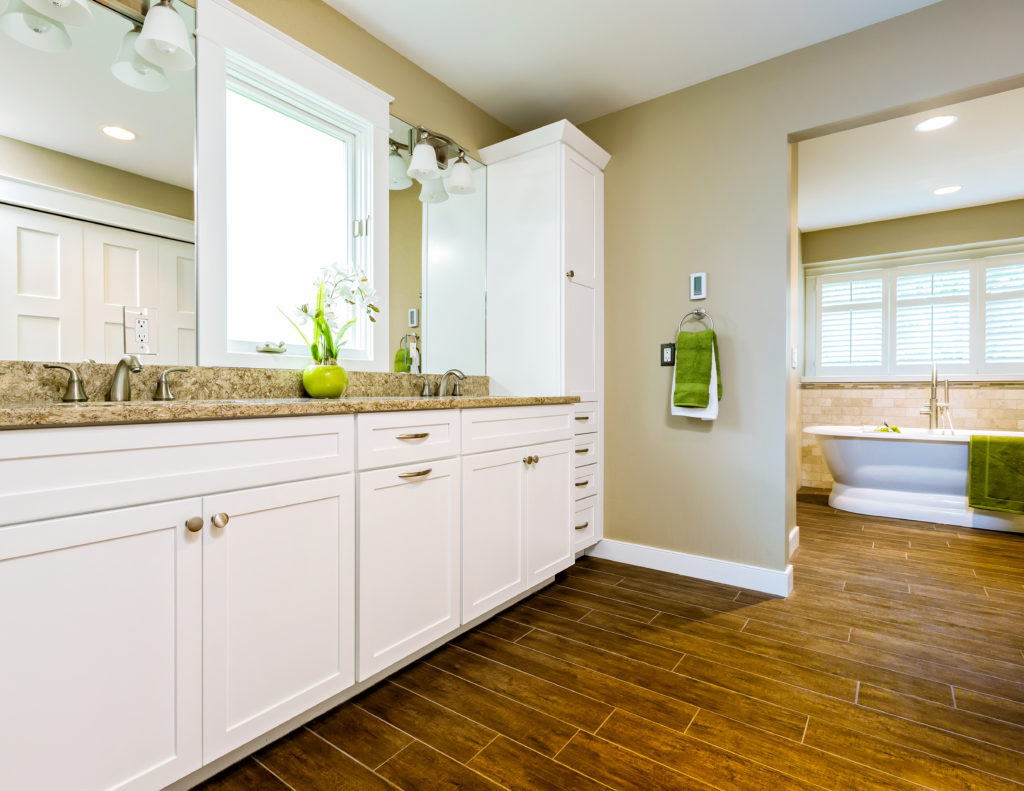
Wants vs. needs. Jedwab and his team assess their clients’ wish lists and must-haves along with their goals and budget. “We do this by asking a lot of questions,” he says. “How do you function in the space? Are you updating with the intent to stay in the home, or to freshen up the space before putting it on the market? Are you left- or right-handed? These are just a few of the questions we ask to establish the right scope.”
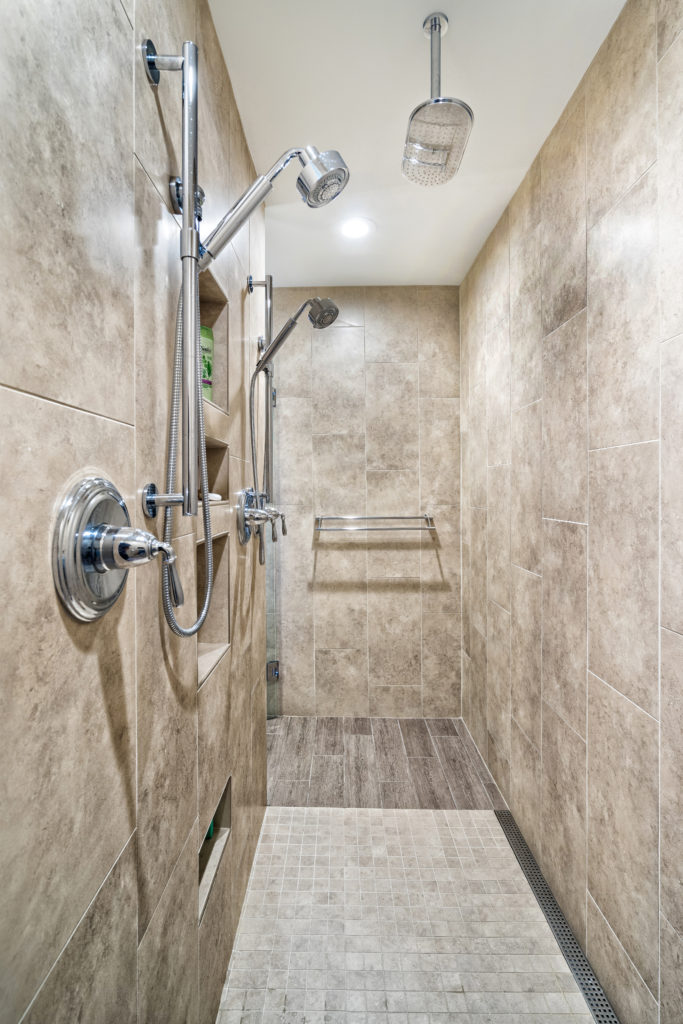
Expect the unexpected. Remodeling can be more challenging than new construction, because you don’t know what you’ll find when you start opening walls up, Jedwab says. “Building codes were different 20 years ago, and we often discover some questionable installations behind the scenes. It’s a good idea to be prepared for some surprises that might mean adjustments to budgets and timelines.”
Considering a bath remodel? Jedwab offers some tips below for
balancing form and function.
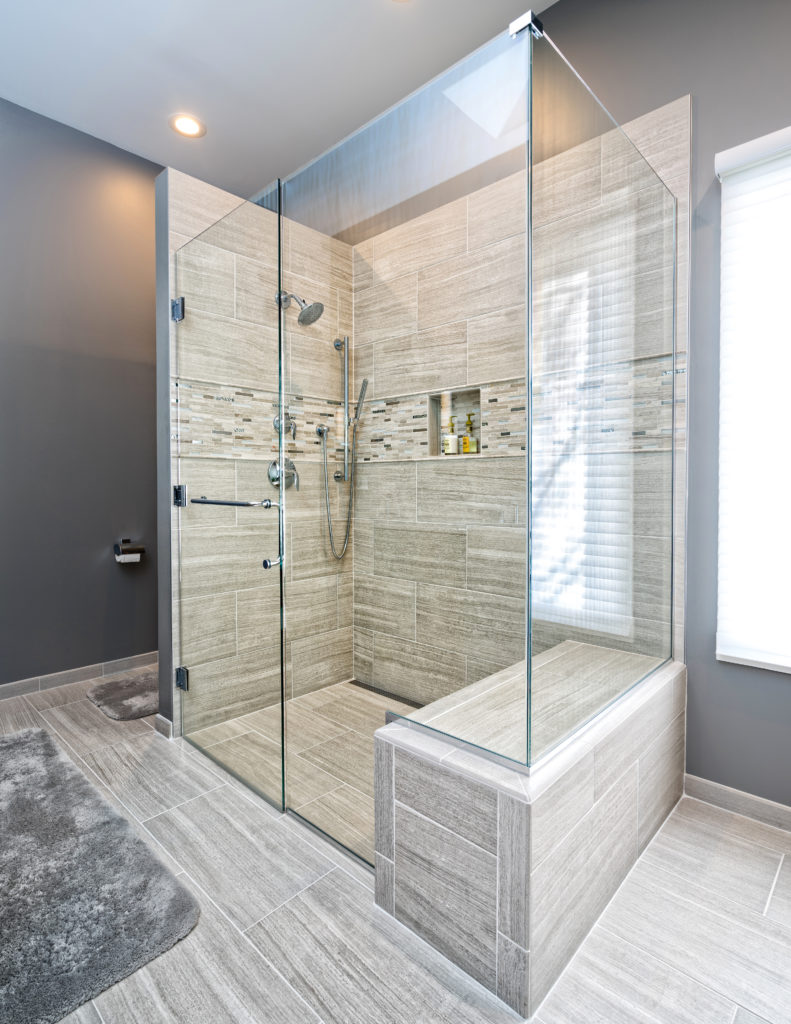
1. Simplify Your Solution
Despite what you might think, you might not need a total remodel, Jedwab says. “These Shelby Township clients gave us a common request: get rid of the big deck and tub and install a larger shower,” he says. Instead of a complete overhaul of the space, the solution was relatively simple.
“The original plumbing remained the same with the exception of removing the jetted tub, allowing us to expand the shower by almost 2 feet and install a bench,” Jedwab says. “Since the couple plan to stay in their home for as long as possible, the curbless shower created a barrier-free bathroom should they have mobility issues in the future.”
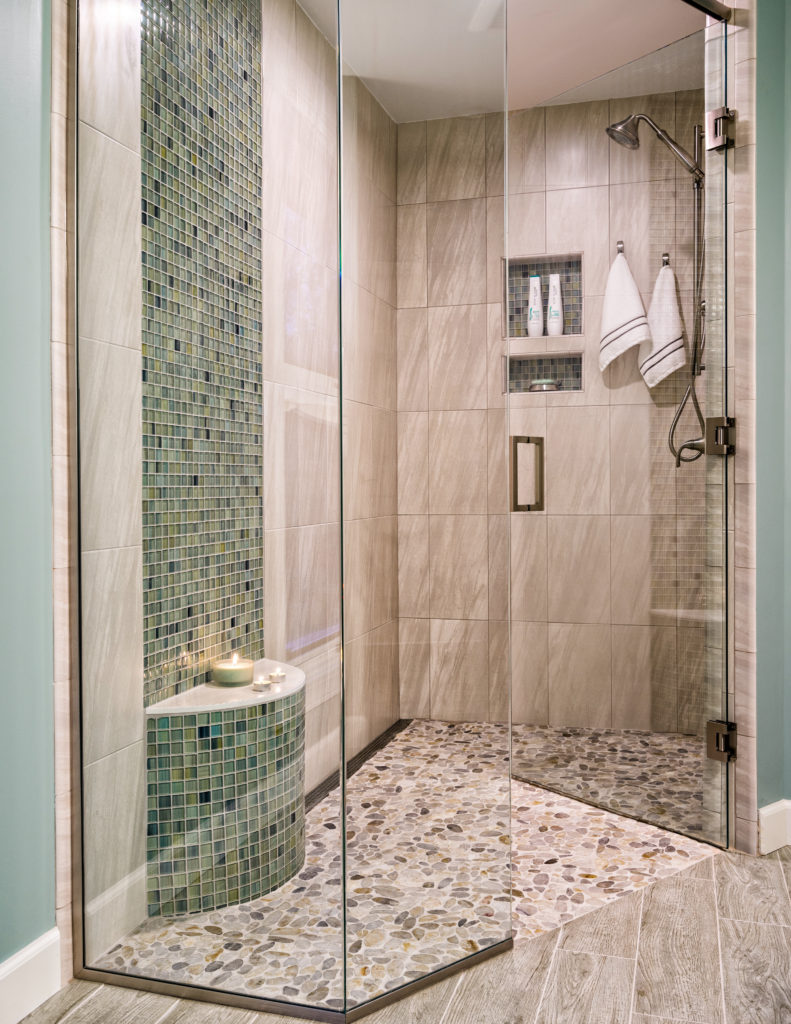
2. Rethink That Tub
Bathtubs aren’t just a big-ticket item — they’re big. Eliminating an existing tub will open up additional square footage that can be reassessed within a design, Jedwab says. “This couple loved their 1980s home in Rochester Hills, but the single-sink vanity and tiny shower made it a cramped space for two people,” he says.
“Removing the tub opened up a whole wall, allowing us to move the vanity and expand it to hold two sinks. With the vanity on the other side of the room, the shower doubled in size, and a curved bench was added both for convenience and as a feature element.”
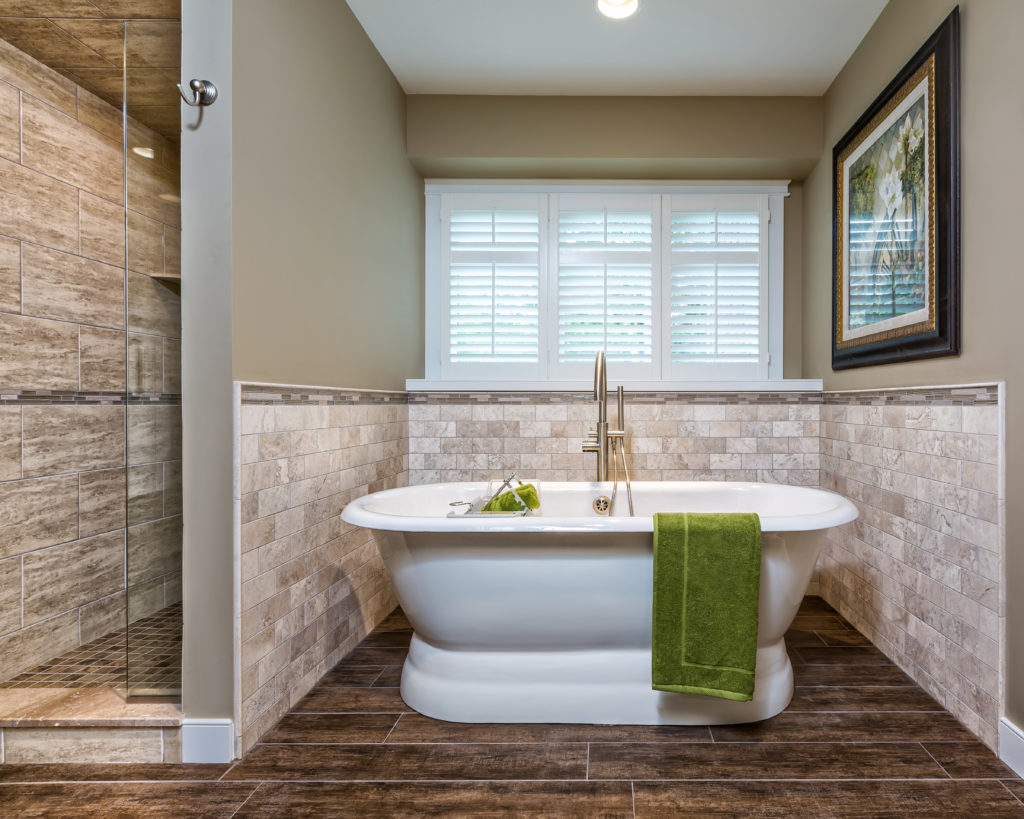
3. Consider a Stand-Alone Option
A free-standing tub offers a clean look and a more open feeling, adding to the spa-like environment many people want in their home, Jedwab says. In this Shelby Township home, “the large ’90s-style tub was not only dated, but also difficult to clean and access,” he says. “We pulled the entire deck out of the alcove and replaced it with a free-standing cast iron tub that became the focal point of the room.”
More: For more information, visit Lincorp Borchert’s website:
https://www.lincorpborchert.com/ and our Houzz Profile:
https://www.houzz.com/pro/ron-jedwab/lincorp-borchert
This story was written by the Houzz Sponsored Content team.
